Home Defense Kit: Gear You Need
January 25th, 2020
7 minute read
Contrary to some opinions, home defense amounts to more than just firing a couple of blasts from your grandpa’s shotgun into the night air. Criminals are violent and aggressive, so you need the right tactical kit for successfully repelling a home invasion.
A home defense kit is a collection of tools you can employ quickly should a violent attacker or home invasion crew kick in your door.
At the very least, your home defense kit should include: a tactical flashlight, a firearm, a bleeding control kit, a cell phone, body armor and clothing. Some of these items are similar to what you might carry in your self-defender kit outside the home.
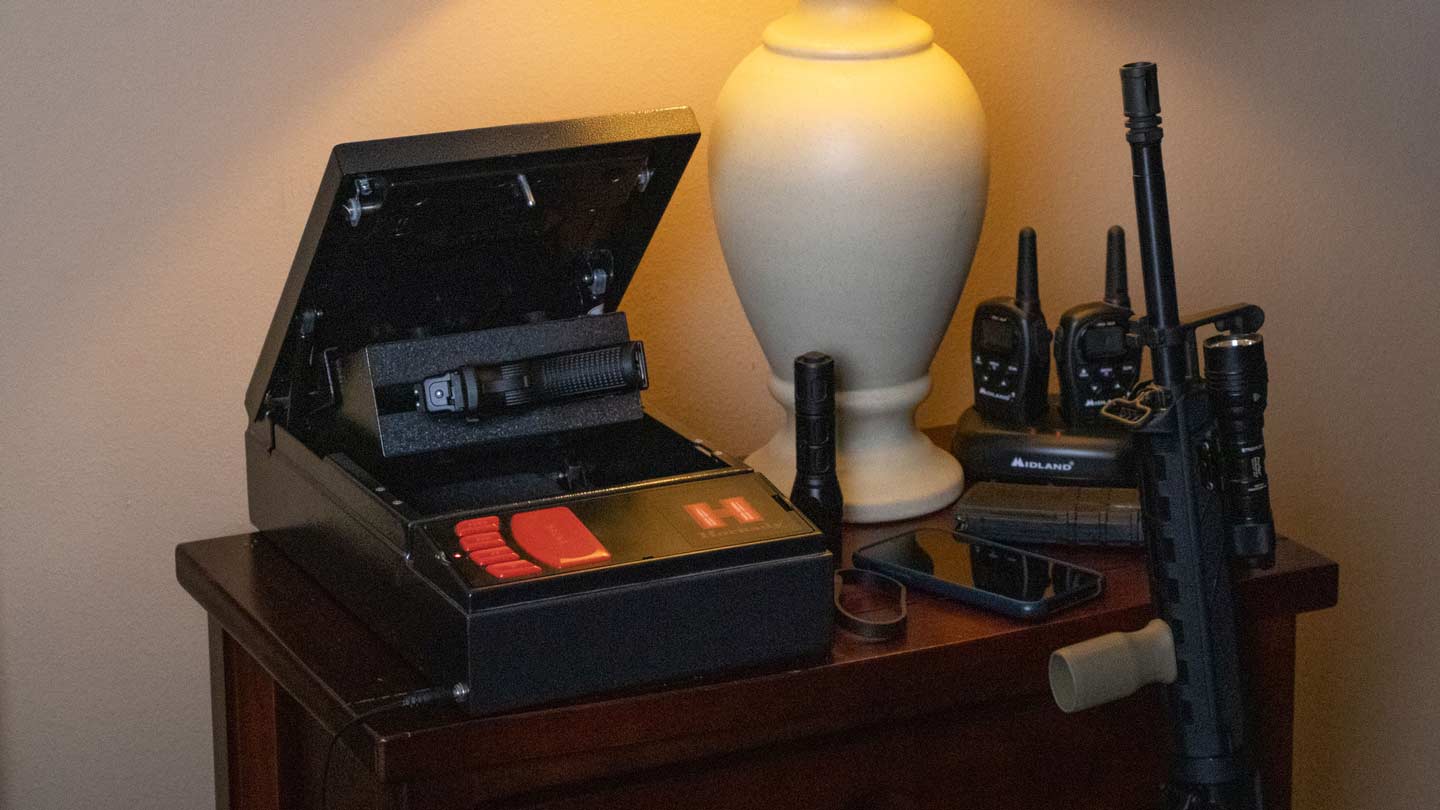
Let’s dive into what each one is along with some thoughts on what to use and how they might be employed.
Clothing
An often overlooked survival item for home defense is clothing. Fighting naked – or even just in your boxers – is not ideal. Clothing can help protect you from abrasions, cuts and other injuries plus it often gives you a way to carry other important tools like a knife and phone. I consider it as “must have” tactical gear.
Next to my bed is always a pair of jeans and sneakers. If I awake and do not immediately need to fight, I can slip these on in seconds before investigating whatever woke me up. In the winter, I also keep a jacket handy in the bedroom in case there is a need to check on something outside.
Clothing is the basis of my home survival gear.
Firearm
If you have an intruder in your home, it is likely a deadly force situation. Based on my law enforcement experiences and studies of criminal behavior, I believe that someone breaking into your home when there is a high probability of you being there is a serious threat.
Burglars want to avoid confrontation and will steal from your home during the day when you are away at work. Home invaders, on the other hand, frequently come at night knowing you are home. These are not people looking to avoid confrontation. Rather, they invite it.
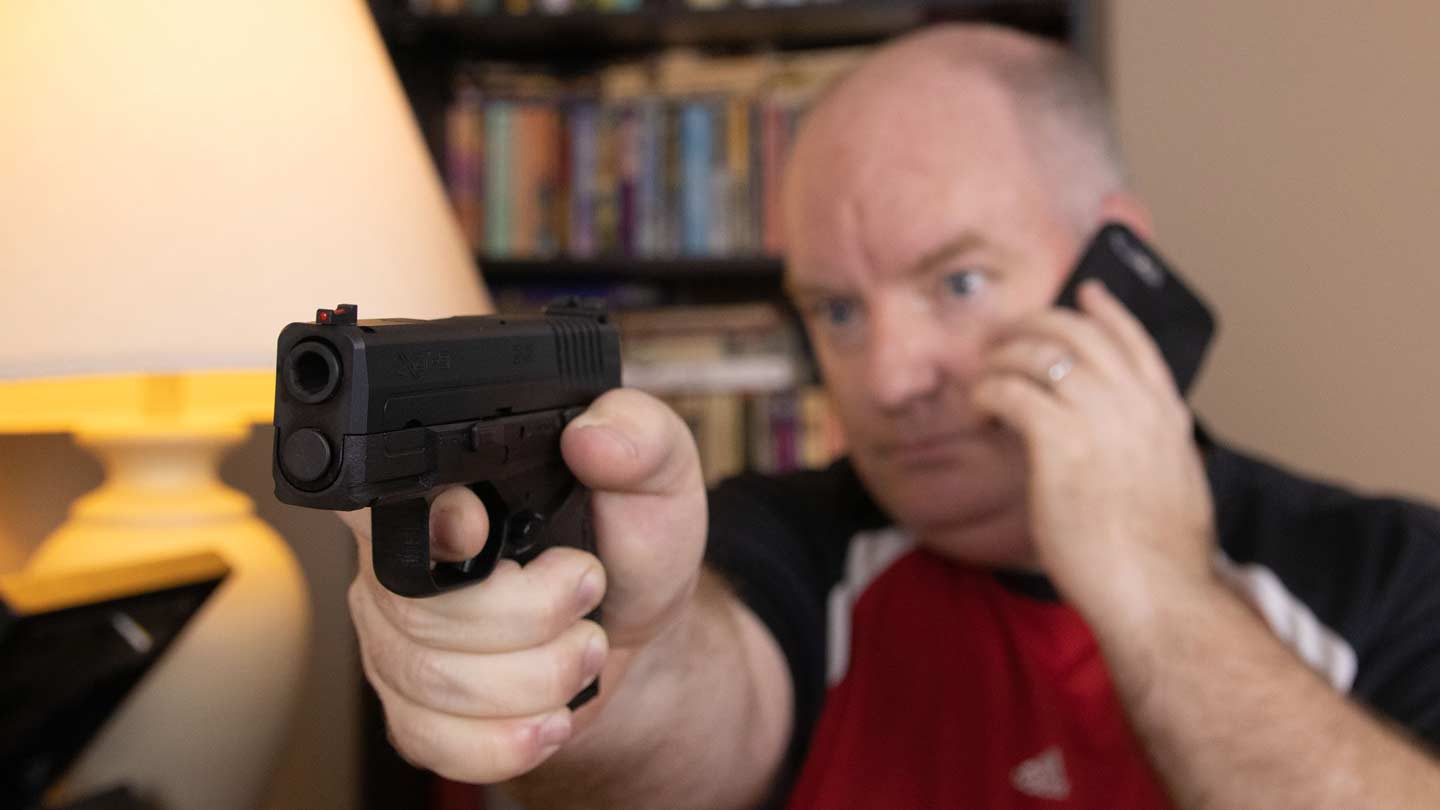
Deadly force may need to be employed to protect yourself or your family. A firearm is one of the best ways to defend yourself in these scenarios.
While your concealed carry pistol can serve well in these instances, many people opt for another firearm. In your home, you do not have to work about concealment. A larger gun with a greater capacity – home invaders often work in groups – may be ideal.
For me, I keep my Springfield SAINT AR-15 next to my bed. It is loaded with Hornady 55 grain TAP Urban ammunition with a spare magazine on the nightstand. Should I need to deploy the rifle, the magazine easily slips into my jeans back pocket for an emergency reload.
I also keep a Springfield Legacy Series XD 4” Service model pistol in a Hornady RAPiD Safe at my bedside.
If I need to check something, and a rifle does not seem appropriate, I can pull this out and drop it into my Safariland 578 GLS holster. A very secure paddle holster, it slips onto my pants belt and offers excellent retention with its Grip Lock System.
My wife has a very similar set up on her side of the bed. The mirroring of defensive weapons allows us to use the other’s tool without fumbling with an unfamiliar system.
I’d recommend reading my article “How to Store a Gun for Home Defense.” I offer additional ideas for how to stage firearms in your home.
Flashlight
Lighting is essential to any self defense encounter. Before ever shooting your firearm, you have to know that a deadly threat exists. If you cannot positively identify the threat, pulling the trigger is ill-advised.
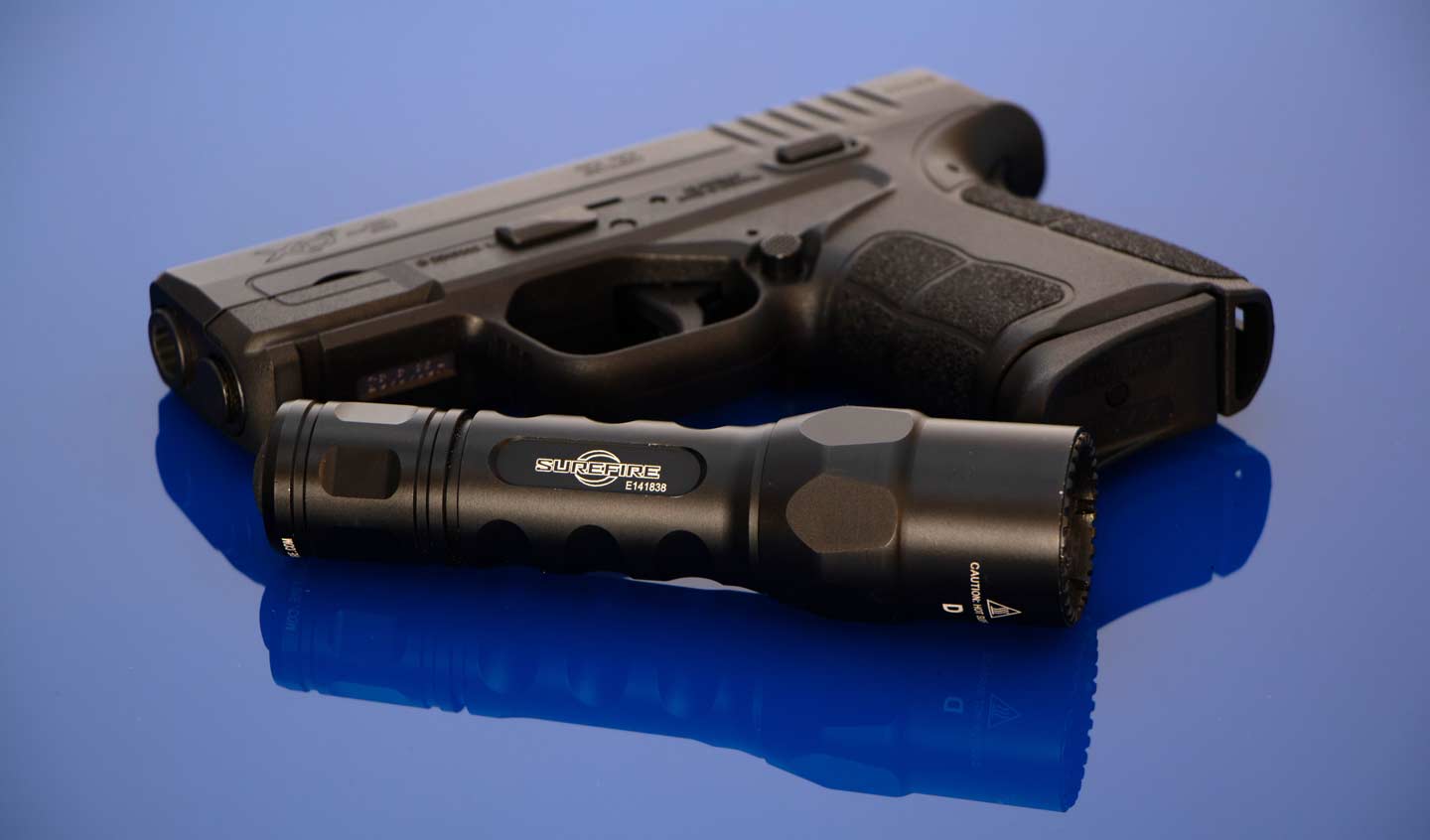
Too many times I read in the paper about a homeowner who shot a loved one in a case of mistaken identity. If the shooter had positively identified the target, a life would have been saved.
For home defense, you need to flashlights for each defender. One should be a hand-held light that is used for searching and general illumination. For most homes, I recommend a quality light with at least 500 lumens and a broad beam instead of a concentrated spot. I like the SureFire G2X Tactical as an affordable, but high-quality, flashlight.
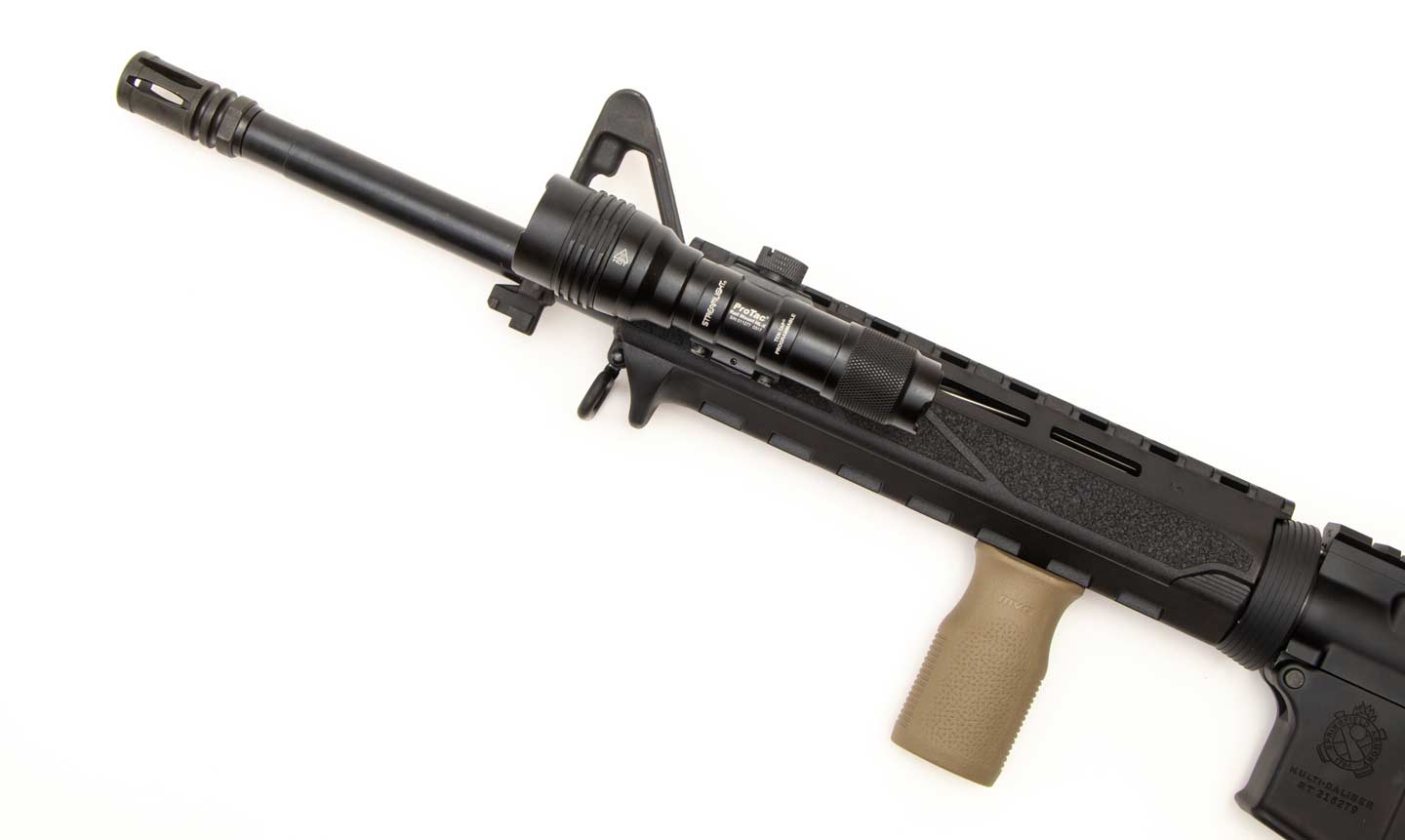
A second flashlight should be mounted on your firearm. The weapon mounted light can be a dedicated unit or a hand held light affixed to the gun with an adaptor. This light is used for engaging a threat.
Cell Phone
Communicating with public safety services is of obvious importance. If you believe there is an intruder or other emergency, you should take immediate action to improve your ability to defend yourself and then pick up the phone and call 911.
When calling 911, you want to provide important details to the call taker such as your location and the nature of your emergency. Make sure the call taker understands you believe there is a threat to your safety. You do not want the operator to misunderstand your needs and think you are reporting a burglary that occurred earlier. A burglary that is not in progress will be labeled as a low priority situation.
Try to stay on the line with the call taker until officers arrive and make contact with you. Even if you have to put the phone down, leave the line open so they can hear what is going on.
You will want to let the 911 operator know how to recognize your home. Street numbers aren’t always easily seen – especially if officers are crossing through a neighbor’s yard to reach you. Identifying your house as “the white two-story in the middle of the block with the red minivan and green truck” can be a huge help to officers.
Also let the call taker know who is supposed to be in the house, and where they should be. If you can gather everyone into a single location, this will help the officers properly identify the intruders.
Bleeding Control Kit
Just like you may have to fight until officers can arrive to help, you may also have to employ bleeding control techniques to survive until paramedics can get to you.
Some wounds are not survivable, but most are. In fact, many people have died from survivable gunshots to the leg or arm simply because they did not have the tools or training to control their bleeding long enough to reach help.
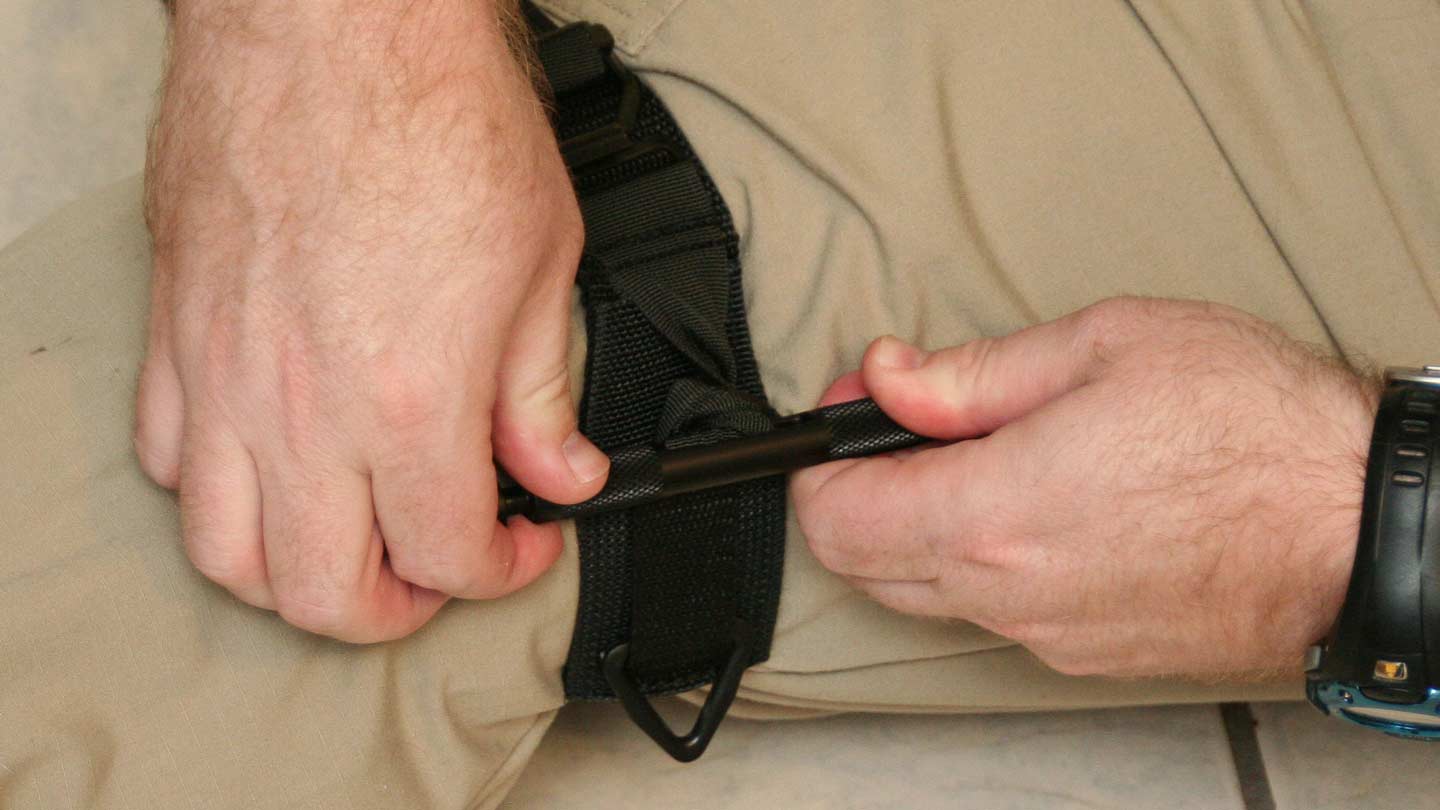
At its most basic, a bleeding control kit will include a quality tourniquet like the C-A-T or SOFTT-W. These commercially manufactured tourniquets have been developed and tested by emergency medical personnel and proven effective in combat. I encourage you to read Kit Perez’s article on how to use a tourniquet.
A good bleeding control kit will also include a compression bandage, gauze impregnated with an a hemostatic agent, trauma shears and medical gloves. Multiple tourniquets and other supplies allow you to treat multiple wounds.
I urge caution when selecting where you purchase your medical supplies. There have been cases of counterfeit tourniquets making there way onto some online sales platforms. Rescue Essentials and North American Rescue are reputable emergency medical supply companies that I have worked with for years. I recommend both without hesitation.
Body Armor
Body armor is a completely passive protective device. Once you put it on, it works without needing any additional input.
Soft body armor will stop many handgun rounds. This kind of armor is typically rated as II-A, II or III-A to indicate it passed increasingly tougher standards developed by the US Department of Justice. In other words, Level III-A armor will stop more handgun threats than a Level II-A vest will.
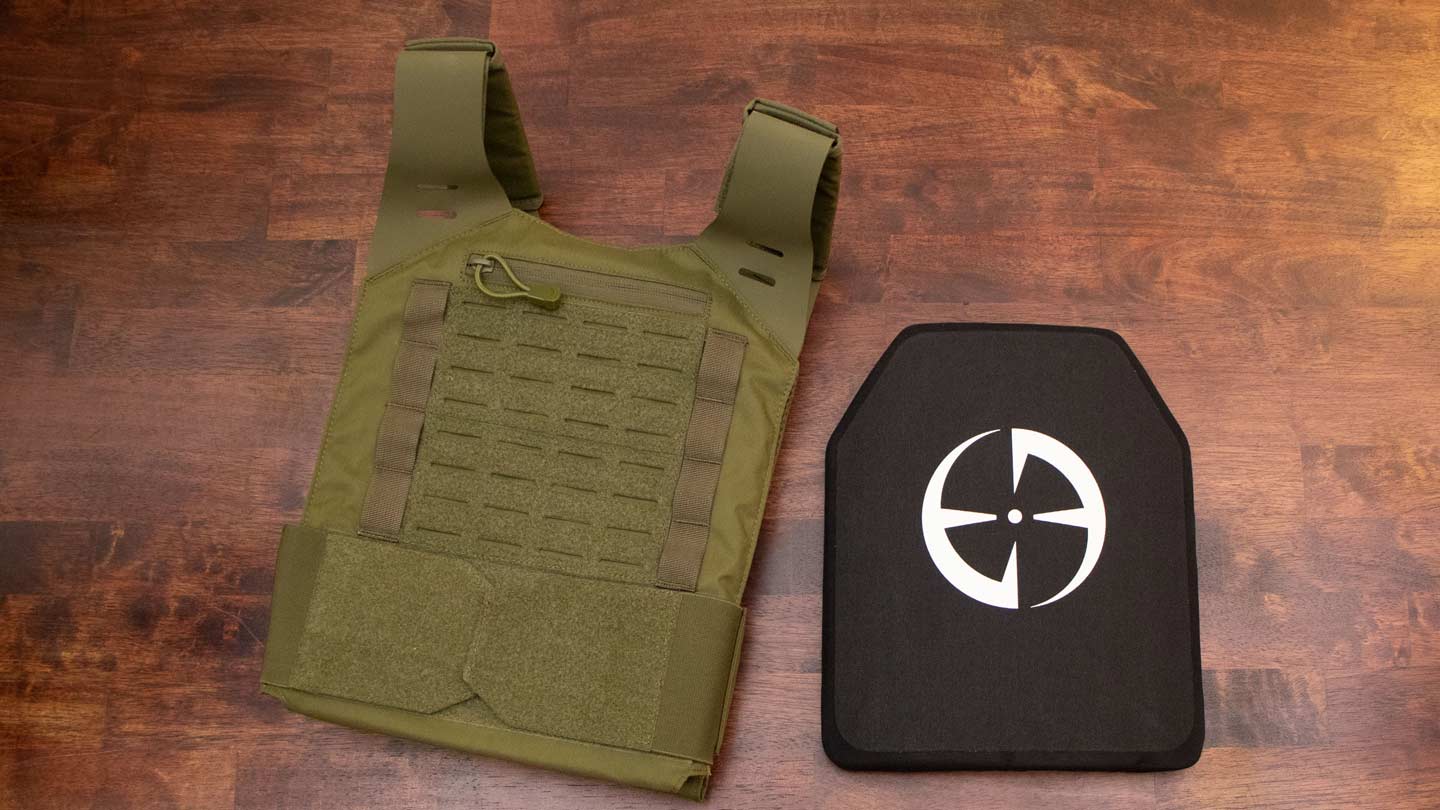
Hard body armor tends to be bulkier and heavier than soft armor, but it is rated to stop more powerful rifle rounds. Hard armor tends to provide less area coverage that soft, but when fitted properly, will protect your heart and lungs.
Hard armor is typically worn in a carrier that goes over your clothing. As many carriers have attachment points for pouches, you can use it to carry spare ammunition, your flashlight, bleeding kit and other gear you might need.
Keep in mind that you are not likely to don rifle plates every time you get up to check something in the middle of the night. So, I recommend having duplicate gear readily accessible in addition to whatever you might add to the plate carrier. As an example, I have a flashlight on my nightstand and an identical one in a pouch on my plate carrier.
Final Thoughts on Self Defense Equipment
I’ve presented the basics of a home defense kit. Special needs, budget and location will determine what you include in your kit.
My main goal is to give you some ideas on what kinds of gear you might need for a home invasion scenario. It is now up to you to evaluate your residence, likely threats and family situation. Whatever you decide, do not delay in implementing your gear plan. You never know when defending your family will move from the theoretical to reality.
Editor’s Note: Please be sure to check out the new The Armory Life forum, where you can comment about our daily articles, as well as just talk guns and gear. Click the “Go To Forum Thread” link below to jump in!
Join the Discussion
Continue Reading
Did you enjoy this article?

 288
288






